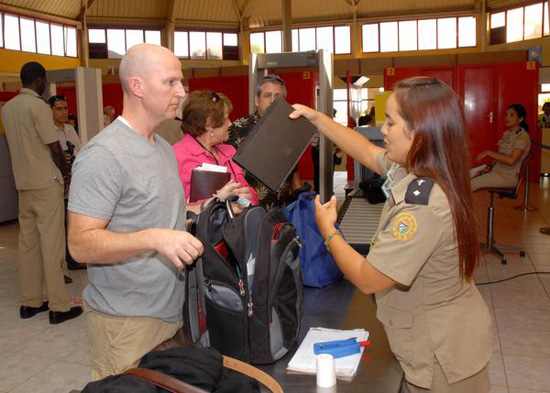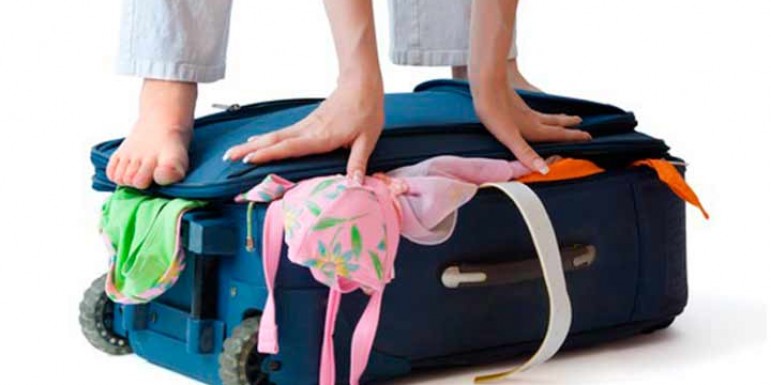
New Customs rules aim to curtail illegal imports, profiteering
The Cuban Customs agency has issued new regulations to control the massive flow of goods brought in from abroad by Cuban travelers to be sold for profit, several official publications announced last week.
Resolutions 206, 207 and 208 of General Customs of the Republic (AGR) and Resolution 300 of the Ministry of Finance and Prices (MFP) will take effect on Sept. 1, the daily Juventud Rebelde reported, citing the Justice Ministry’s Official Gazette No. 30.
The updating of the Customs policy applied since 2011 comes after agency officials noticed “the large volume of imports made by natural persons intended for commercial sale and profiteering, under the protection of rules established for the importation [of goods] without commercial purpose,” the newspaper says.
The new rules are intended “to protect our economy and stimulate the production and sale in our country” of goods that are available on the island or can be produced there.
For years now, many Cubans who live abroad, or have traveled abroad, have been returning to their homeland with enormous amounts of merchandise that, they claim, is personal property but that they sell in private transactions or through street vendors.
According to the daily Granma, “in one year, a passenger imported, through José Martí International Airport, 41 computer monitors and 66 flat-screen TV sets. Another person brought in 34 printers, 58 monitors and 74 computer towers between 2011 and 2014.
“In January 2013, a passenger brought in his luggage 1,695 ball bearings and in March carried 400 lightbulbs for motorcycle headlights. All those items were confiscated because of their commercial nature,” Granma said.
Normally, the merchandise is assessed by Customs at the personal rate, not the commercial rate. But all that is going to change this year.
The new regulations “establish new limits to the quantities of products, which will enable [Customs] to determine the commercial nature of the importations made by natural persons,” Juventud Rebelde says. A new “Appraisal List” is established to assess the value of non-commercial importations made by travelers.
Much of the importation is done by paid messengers or couriers known as “mules” who commute constantly to Cuba, carrying merchandise they claim to be theirs but that, in fact, is meant for commercial resale at a profit.
Also, a new tax/fee schedule is applied to unaccompanied merchandise sent by natural persons abroad by air, sea, or postal services.
According to Resolution 206, a study done by Customs indicated the need “to modify the quantities that Customs will take into account to determine the limit of the commercial nature of the importations done by natural persons, according to the type of article or product in question, when — by its nature, quantity, functions or repeated importation — it is shown that [the importation] is made with commercial objectives.”
If a Customs inspector determines that the importation is not personal but commercial, he may confiscate all of it, except for the carrier’s personal effects. The total value of the articles brought in (other than personal effects) may not exceed 1,000 convertible pesos (CUC) or US$1,000.
An 18-page appendix lists the items that may be brought in and the maximum number of units that may be considered personal, rather than commercial. A breakdown of the appendix follows; unfortunately, the items are too numerous to be listed here.
Chapter 1: Comestibles, beverages, tobacco and cigarettes.
Chapter 2: Cosmetics, perfumes, household cleaners.
Chapter 3: Photographic and cinematographic products.
Chapter 4: Paints, varnishes, hardware items.
Chapter 5: Clothing.
Chapter 6: Footwear and leather goods.
Chapter 7: Baby supplies.
Chapter 8: Linen goods for bathroom and bedroom.
Chapter 9: Household utensils.
Chapter 10: Electrical appliances, computers, communication devices.
Chapter 11: Jewelry.
Chapter 12: Musical instruments.
Chapter 13: Furniture.
Chapter 14: Automotive parts.
Chapter 15: Toys; sports and recreational equipment.
Chapter 16: Construction materials.
Chapter 17: Tools.
The Cuban News Agency provides a link to Official Gazette No. 30 (in Spanish only).
An article in Granma on Saturday (July 12) includes some of the most frequently asked questions about the new regulations. So does an article Sunday in the CubaSi website.


